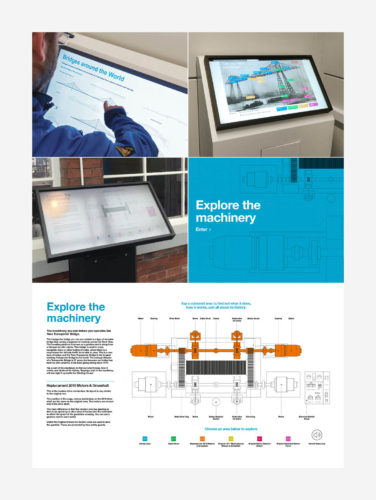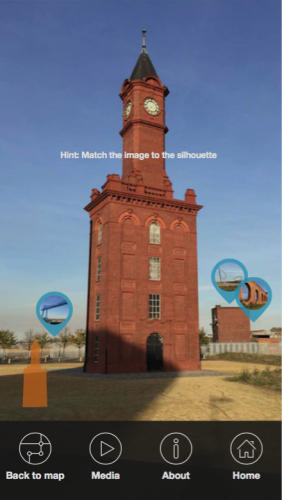The most important elements of web design for SMEs with global ambitions
Indigo Multimedia has worked with North East SMEs since 1995, at the very beginning of the internet and its role as a key channel for businesses to operate worldwide. In 2018, it’s not enough to just have a digital presence. To capitalise on opportunity and capture interest from potential customers, an optimised, personalised and interactive website is critical for business development.
Effective, intuitive website design is complicated. But the return is well worth the investment. At Indigo our process is really centred around co-creation with the client and / or your audiences. The better you know your customers, the more defined and targeted we can design the website, so that it acts as an effective sales funnel and provides an excellent customer experience.
At Indigo, every project we take on has all the requisite digital marketing functions to elevate the site to best of breed in current web design standards. In 2018, we have five non-negotiable standards, and two exploratory trends to watch out for.
- Fast Loading
No one wants to wait (and wait and wait) for your site to load. We design sites with super-fast loading times for all users on all devices (even the ones with slower internet connections). Consideration of loading speed is even more crucial in 2018 when using video in page backgrounds is so popular, and image galleries are a key part of online marketing collateral. One of our SME clients, Projected Image, has an image library of many thousands of products, which meant we had to design with this in mind and focus on optimising loading times throughout.
- Mobile Ready
Virtually everyone uses smart devices on a daily basis. Have you checked your web stats lately? It’s likely that your mobile traffic is now a significant proportion of your visitors, and the mobile experience is critical for them. Indigo will help you examine your audience and their browsing habits and take a mobile friendly or mobile first design direction that maximises conversion rates. The RE mobile experience was designed by Indigo to be smooth, engaging and somewhat addictive!
- SEO Savvy
Don’t underestimate the power of optimizing your site for both browsers and humans. Indigo will support you to develop compelling, readable content for your followers. For the search engines, always include all important on-page SEO tags and elements, including schema and XML sitemaps. We can advise you how to do this yourself using SEO software, or we can implement an SEO and online marketing strategy for you. Indigo has supported many clients with optimising web content, including Emtelle, who landed a major new international client who found them via a search engine.
- Conversion Optimized
Conversion rate optimisation (CRO) involves creating campaign landing pages into your website. These designated pages can keep your readers moving through your site and direct them to schedule an appointment, request a product demonstration, and even make a purchase. Indigo builds CRO into the design process by creating persona pathways for different types of customers. This proved highly effective for Mslexia the build of its new website increased sales and enabled them to diversify their product range by appealing to ‘digital natives’.
- Social Media
Never miss an opportunity to leverage the power of social media. Integrate all relevant social media platforms within your website. Allowing users to quickly access social media pages from the website instantly broadens a brand’s reach and helps increase visibility and traffic. Indigo can advise on social media strategy and has designed some sites that rely almost solely on user generated content, such as the School in the Cloud project for Newcastle University.
So there you have five essentials of web design, which matter no matter what size your business or your budget. And for something to think about for the future, two emerging trends you’ll be hearing a lot more about…
Emerging Trend 1 – Progressive Web Apps
Intrigued by the impact apps have on mobile media platforms, we can now successfully blend the very best web and app features into a hybrid known as Progressive Web Apps. Expect to see Progressive Web Apps out in full force throughout 2018. Now when you are thinking about what your website could do for your business, consider including various features into your design such as splash screens, push notifications, and animated page transitions to elevate the user experience and provide more touch points with your brand.
Emerging Trend 2 – Machine Learning and Artificial Intelligence
Yes, really. Artificial intelligence is no longer a futuristic, high-tech term and has successfully worked its way into our everyday vernacular and online experience. Adobe’s Sensei is delivering AI tools to various web design platforms worldwide, making it a more accessible, available resource.
So, is your brand’s website up to 2018 standards?
If not, it’s time for an immediate online renovation. Remember, it’s not about grand gestures and overhauls. Rather, 2018 will focus on a shift towards simple, functional, and futuristic designs. Implementing these (relatively painless) standards as a non-negotiable design baseline can have a significant impact on the way we do business and connect with potential customers online for optimal ROI with every user engagement.
What Indigo clients say:
In first six months from launch of new site
PAGE VIEWS DOUBLED
BOUNCE RATES HALVED
“We have had a lot of success in getting people to use the site and the difference in bounce rates and time spend on the site is looking great.”
Ian Spoors
Marketing Manager, Projected Image
“Indigo explained things clearly; converting technical functions into easily understandable terms…when developing the site their attention to detail was excellent and most importantly they listened to us, taking time to understand our brand identity.”
Jenny Vaughan, Co-Founder, RE Found Objects

